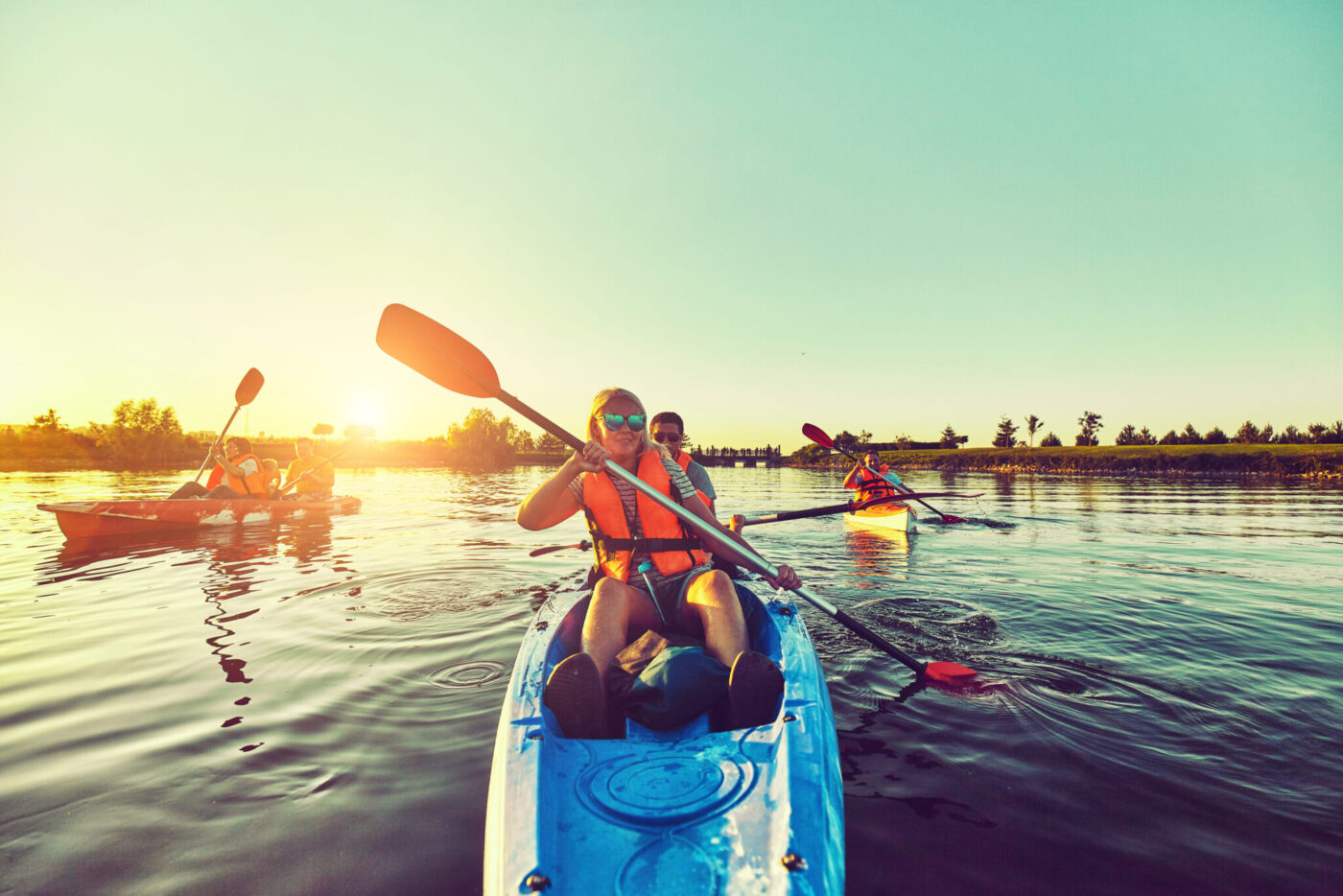Despite the fact that we Humans are conceived and immersed in fluid for the first nine months of our lives, the fact is that water is not our natural element. In fact, if we are immersed in water over our heads after our births for more than a minute or two, we cease to breathe! However, despite the inherent danger that water poses to humans, we are still drawn back to it over and over again like a moth to a flame.
In fact, hundreds of people around the world take up the sport of kayaking each year because they feel an innate need to reconnect with nature and experience the sensation of floating on the water again.
Thus, a kayak is an excellent craft for this purpose since there are a seemingly endless number of kayak designs on the market today that are well suited for every paddler ranging from the beginner to the expert. Plus, they are easy to paddle and they are the perfect stealth craft for sightseeing, fishing, and observing animals in their natural habitat.
However, because the water is not your friend, there are several safety rules that you should observe and adhere to every time you enter your kayak.
1. Beware of the weather
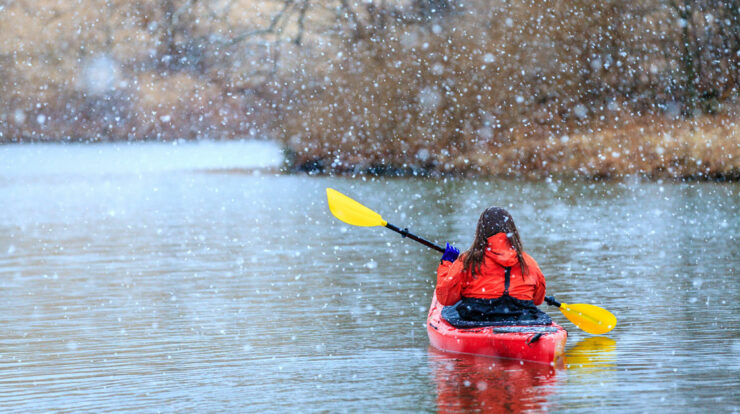
Because the weather can change very quickly in many popular paddling destinations around the world, bringing in sudden thunderstorms with torrential rains and abundant lightning strikes, it is imperative that you pay close attention to the skies above you.
Also, not only should you always watch a weather report for the area where you will be paddling, but you should also consider purchasing an Atmospheric Data Center such as those made by Brunton which will keep you appraised of the barometric pressure and alert you to any approaching storms.
2. Beware of tides and the currents they create
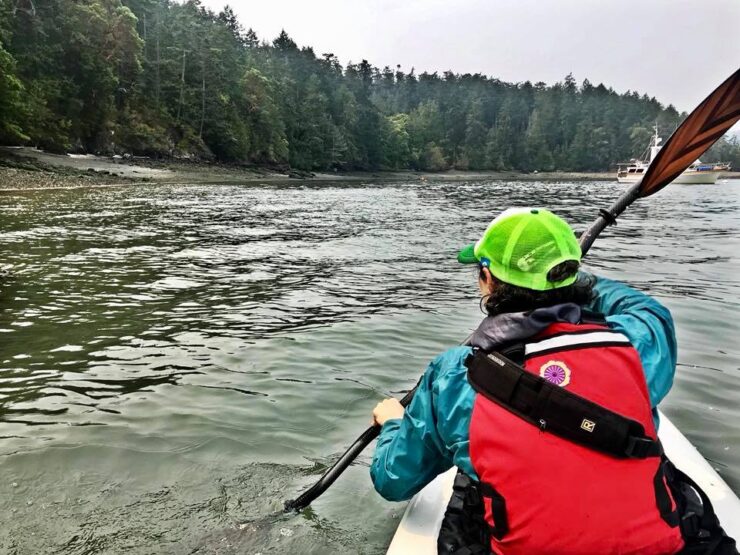
In addition to the weather, it is also imperative that you be aware of both the tides and currents in your location. For instance, while some places only have one high and low tide per day, others have two of each per day while others have a mixed tide.
Therefore, it is important to be aware of both the frequency and duration of the tides in your location so that you can use them to your advantage by riding the low tide out to your destination and then riding the high tide back in.
However, it should also be noted that both ebbing and flowing tides can create dangerous currents where they pass over or around obstacles, and thus, it is also imperative that you either converse with local paddlers about the local currents or purchase a copy of a book called a Coastal Pilot for the area in which you will be paddling.
3. Be aware of the direction and strength of the wind
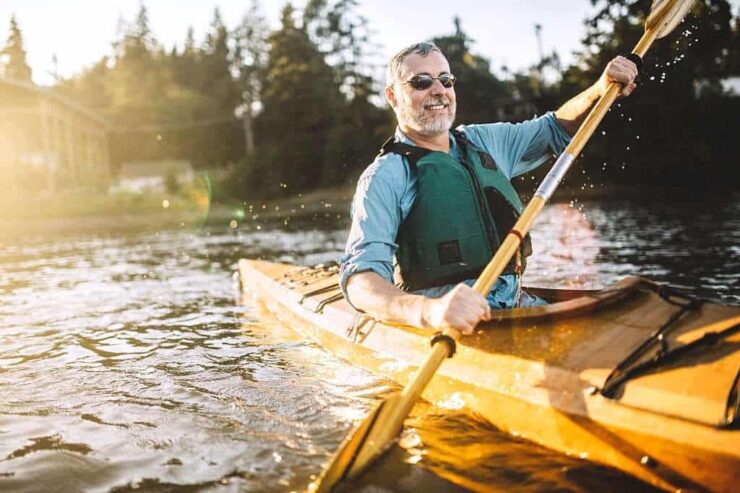
The wind is another factor that should be taken into account when paddling regardless of whether you are paddling on a lake, a river, or an ocean. Because kayaks have bows, sterns, and gunwales that extend above the water’s surface, they are subject to wind resistance the same as the paddler’s body is.
Therefore, strong winds can impede the paddler’s ability to move the kayak in the direction that they want to go, and thus, paddling in strong winds should be avoided unless the wind just happens to be blowing in the direction that you want to travel in.
Also, when paddling in the ocean, you should be aware that offshore winds tend to push paddlers further out to sea whereas, onshore winds tend to push the paddler in toward the shore, and thus, is easier to make landfall in onshore wind.
4. Dress for the water; not the weather
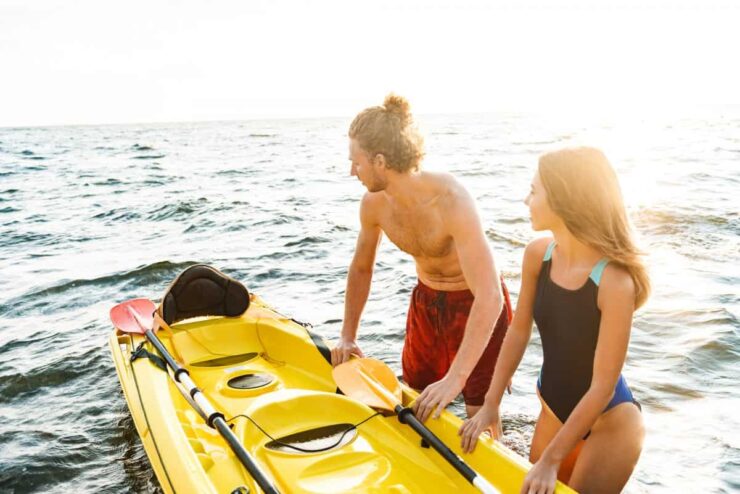
Also called “dressing for immersion”, unless you are an advanced to expert paddler or, you are paddling a kayak so wide it resembles a barge, then it’s best to assume that you will capsize at some point and thus unless you are paddling in the tropics, it is a wise idea to dress for the water; not the weather.
Consequently, instead of cotton clothing, you should instead wear clothing made from nylon, polyester fleece, or neoprene because these materials will repel water and will dry very quickly if immersed in water while also providing some degree of warmth.
Also, there are specialized garments called dry tops, dry pants, and dry suites that are all made from nylon with rubber seals at the openings to prevent water from entering the garment and, they are much more comfortable to wear than a neoprene wet suit.
5. Always wear a Personal Flotation Device
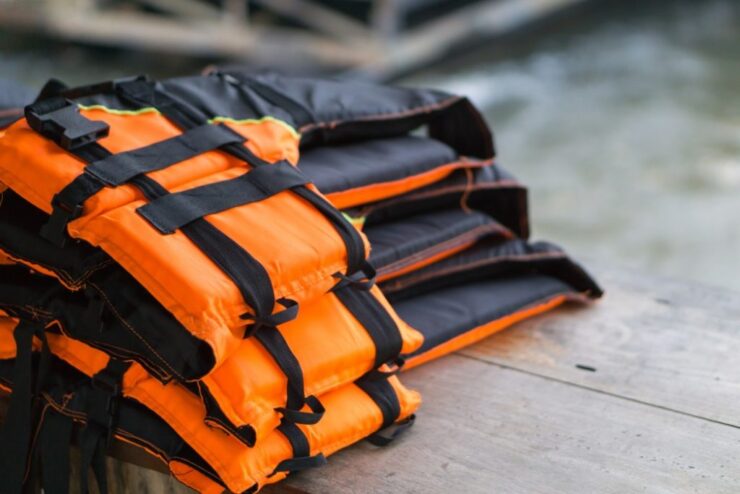
Regardless of how experienced a paddler you are, you never know when you might capsize and be forced to exit your kayak. Therefore, you should wear some type of PFD at all times when paddling.
Even if you are an excellent swimmer, staying afloat without a PFD requires effort but, if you are wearing a PFD, then the energy that you would otherwise expend staying afloat can instead be transferred to other tasks such as removing your paddle float from storage and deploying it so that you can reenter your kayak.
Plus, if you ever capsize and are then separated from your kayak by rough seas or swift currents, then wearing a PFD will become of paramount importance since the floatation it provides will enable you to reach the marine flares, the Personal Locator Beacon, and/or the VHF radio you should carry in your PFD’s pockets.
So, despite the fact that Humans seem to be drawn to the presence of water beyond their need for drinking it to survive, kayaking does present a certain degree of inherent risk to human beings since it is not their natural environment.
Therefore, wearing a PFD whenever you enter your kayak will ensure that you always have access to the air that you need to survive even if you are bobbing in the water like a cork! Plus, if you choose a PFD with large front pockets and then stock those pockets with marine flares, a personal locator beacon, and a VHF Radio, then you will be well prepared for an emergency even if you become separated from your kayak.
Adelaide Gentry, a seasoned kayaking enthusiast and expert, is the driving force behind KayakPaddling.net. With over a decade of experience navigating the world’s most challenging waterways, Adelaide combines her passion for adventure with a deep knowledge of kayaking to provide insightful and practical guidance for paddlers of all levels.
Related Posts:
- 16 Best Kayak For Beginners 2025 - Kayaking Adventure Gear
- Heavy Duty Fishing: 11 Best Rods And Reels For Big Fish 2025
- 10 Best Power Tilt and Trim Fluid Alternative 2025 -…
- 12 Best Fishing Lures Ever 2025 - Baits That…
- 10 Best Inflatable Kayak 2025 - Rivers, Lakes & Open Seas
- Best Kayak Dog Platforms, Seats, Deck, Attachments,…

